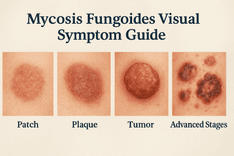The Hidden Signs of Fatty Liver: What Your Body May Be Trying to Tell You
It’s one of the most common yet least understood health issues of our time — fatty liver disease. Once considered rare, it now affects millions across the globe, often without a single obvious symptom. Experts warn that what appears as ordinary tiredness or mild discomfort could, in fact, be an early sign of liver fat accumulation. Understanding these early clues could be key to preventing long-term complications and improving overall well-being.
A Silent, Growing Health Concern
Fatty liver disease occurs when excess fat builds up in the liver, an organ essential for filtering toxins and supporting metabolism. Medical professionals classify it as either alcoholic fatty liver disease (AFLD) or non-alcoholic fatty liver disease (NAFLD) — the latter now being the fastest-growing cause of chronic liver conditions worldwide.
According to the World Health Organization, up to 25–30% of adults may have some degree of fatty liver. Despite this, many remain unaware until a routine blood test or imaging scan reveals it. This “silent” nature makes early awareness crucial.
Common Signs and Symptoms
- While many individuals may not experience symptoms in the early stages, researchers have identified several early indicators worth noting:
- Persistent Fatigue: A feeling of tiredness even after adequate rest is one of the most reported early signs.
- Mild Abdominal Discomfort: Dull pain or fullness in the upper right abdomen can occur as the liver becomes inflamed.
- Unexplained Weight Changes: Both sudden weight gain and difficulty losing weight may indicate metabolic stress on the liver.
- Digestive Changes: Nausea, bloating, or a sense of fullness after small meals can signal slowed liver function.
- Skin and Eye Changes: Yellowing (jaundice) or unexplained itchiness may appear in later stages.
- Mental Fog or Difficulty Concentrating: The liver’s detoxification role affects how the body and brain process nutrients and toxins.
Not everyone will experience all these symptoms — in fact, most cases remain unnoticed until imaging or lab tests are performed. But being attuned to subtle body changes may encourage earlier medical evaluation.
Why It’s Often Missed
Fatty liver often coexists with other metabolic issues like obesity, insulin resistance, and high cholesterol. This overlap makes it challenging to identify which condition is causing fatigue, weight gain, or brain fog.
Additionally, many people assume that only heavy alcohol use affects the liver. In reality, non-alcoholic fatty liver disease (NAFLD) can occur even in individuals who rarely drink. Diets high in sugar, refined carbohydrates, and processed foods are major contributors.
The Link Between Diet, Lifestyle, and Liver Health
Modern research points to lifestyle habits as both the cause and potential solution.
Dr. Anna Rodriguez, a hepatology researcher at Stanford University, notes:
“We’re learning that even small, consistent changes — like reducing added sugars and increasing physical activity — can reverse early fatty liver disease.”
Key lifestyle factors that contribute to liver fat accumulation include:
- Excess consumption of sugary drinks and refined carbs
- Sedentary habits or limited physical activity
- Poor sleep quality
- Chronic stress and elevated cortisol levels
On the other hand, improvements in these same areas can help reduce liver fat and improve enzyme levels.
Early Detection and Medical Evaluation
Early detection remains the most effective defense. Blood tests such as ALT and AST can reveal elevated liver enzymes, while imaging (ultrasound, CT, or MRI) can confirm fat buildup. In some cases, a FibroScan test helps measure liver stiffness — an indicator of inflammation or scarring.
Doctors may also assess metabolic markers such as fasting glucose, triglycerides, and cholesterol, since these often rise in parallel with liver fat.


